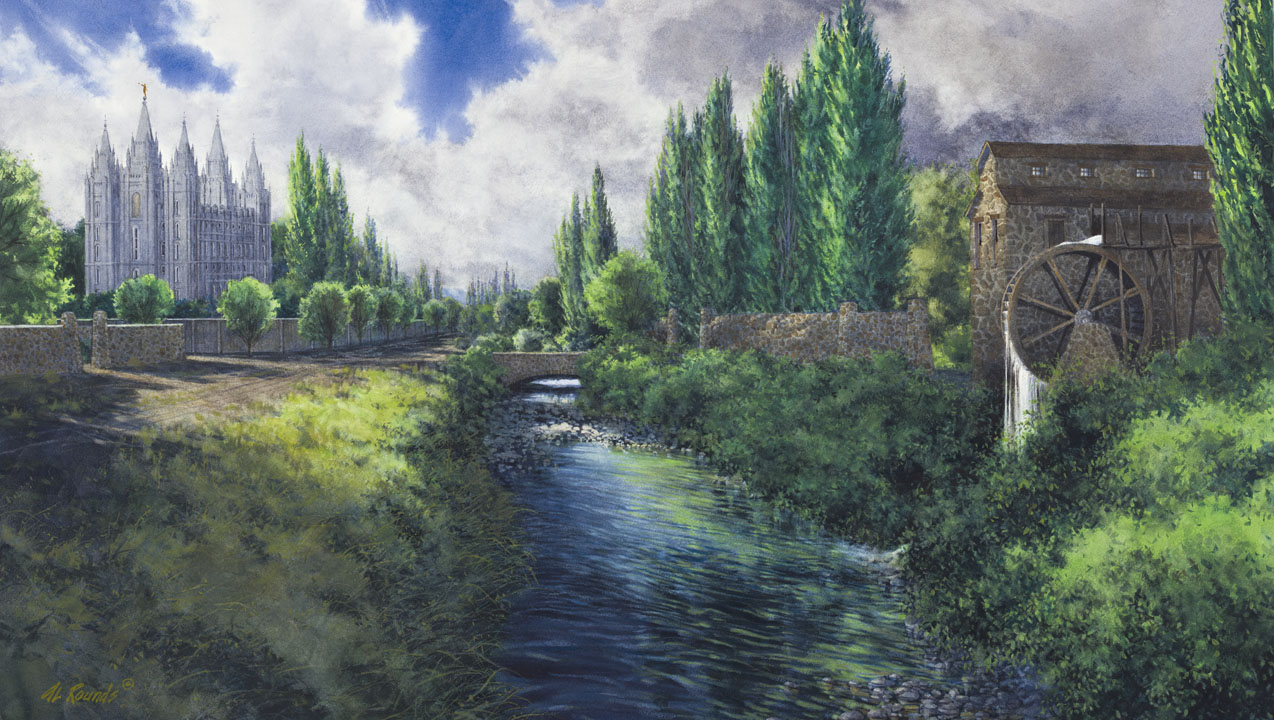
Painted in 2019
“My interest in the painting entitled ‘Living Waters’ came from an early photograph looking up State Street about 1870-1880. You could see the Eagle Gate and the Beehive House, but behind the Beehive House, slightly to the left, was the shape of a mill. I started investigating what that mill was. I went to the Church History Museum model of downtown Salt Lake City, and in the model I could see the mill building labeled as ‘The Heber C. Kimball Mill.'”
“This painting depicts the Heber C. Kimball mill on the right in the summer time with the water of City Creek flowing past it down the middle of North Temple. At the time, City Creek was a free- flowing creek that ran water all year round, which is why it had so many mills on it. The flow was strong even in the summer time. A lot of the snowfall creeks in the valley are fed by snowmelt, so in the summertime their flow is greatly diminished, but that was not the case for City Creek.”
“I’ve tried to over the years create a scene looking down North Temple with City Creek flowing down the middle, but I was always also interested in the houses that were on either side of the street. I got most of my information from that early model map. I photographed that quite extensively so I still have a record of whose house was on which side of the street. Unfortunately, that map no longer exists. They took it down when they remodeled the Church History Museum.”
“I’ve always been intrigued by who owned the mills and ran them. They were generally really good, hardworking people. They ground wheat into flour at no cost for people during hard times. And the milling of lumber for homes was such an important commodity in the pioneer existence. The people who ran the mills were generally the engineers and gift-givers of the time period that kept the community running.”
“In ‘Living Waters’ the mill is delivering the water, which is moving towards the temple. And of course, the temple is always a symbol of the spiritual knowledge that it provides. So the painting captures the importance of both the mill and the temple, and how the two work together for a community and to bless the lives of individuals.”
To purchase prints of this painting, click here.
